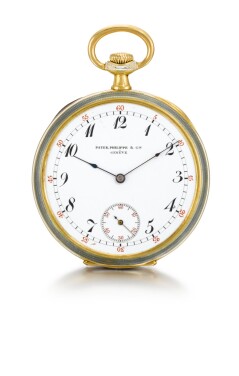O ffering a fascinating insight into important social and cultural moments in history, this exciting collection spanning two centuries presents exceptional enamels, rare automata, watches, gold boxes and objects of vertu with aristocratic and Royal provenance. Highlighting the highest technical horological skills and the most elaborate enameling, this collection will excite connoisseurs who are seeking rarely seen horological treasures and extraordinary objects of vertu from the late 18th century to the early 20th century.
Featured Highlights

Mechanical Treasures for Exotic Markets
Swiss makers were responsible for the ingenious automata created in the last years of the 18th century and the first of the 19th century. These expensive novelties invented for the far-away markets of China, India and the Ottoman Empire were not only technical masterpieces, so well-constructed that they are still in working order 200 years later, but were enclosed in cases of the finest gold and jewelled, enamelled and painted by the best artists.
Exquisite and Intricate Timepieces
The pocket watches in the collection display exquisite craftsmanship on many levels. Lustrously enamelled pieces open to reveal delightful mechanical surprises. Musical timepieces demonstrate the technological skill of their makers. Complicated Swiss automatons complement innovative pieces by iconic makers such as Breguet and William Anthony. Several pieces in the collection also have Royal provenance to add to their appeal.
A History of Hardstone: Fashionable and Fanciful Accessories
The objets d’art in this thoughtfully assembled collection demonstrate the collector’s fascination for hardstones, mounted as precious and curious objects, over the course of two and a half centuries, covering different countries of manufactures and purposes.































